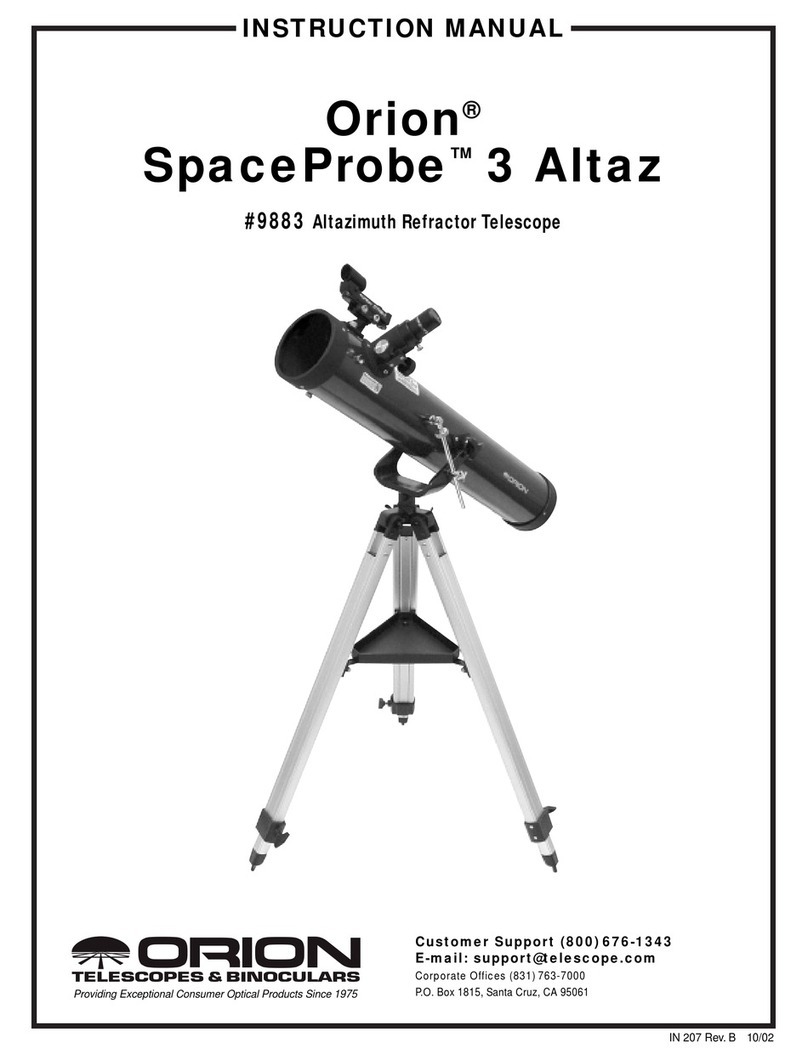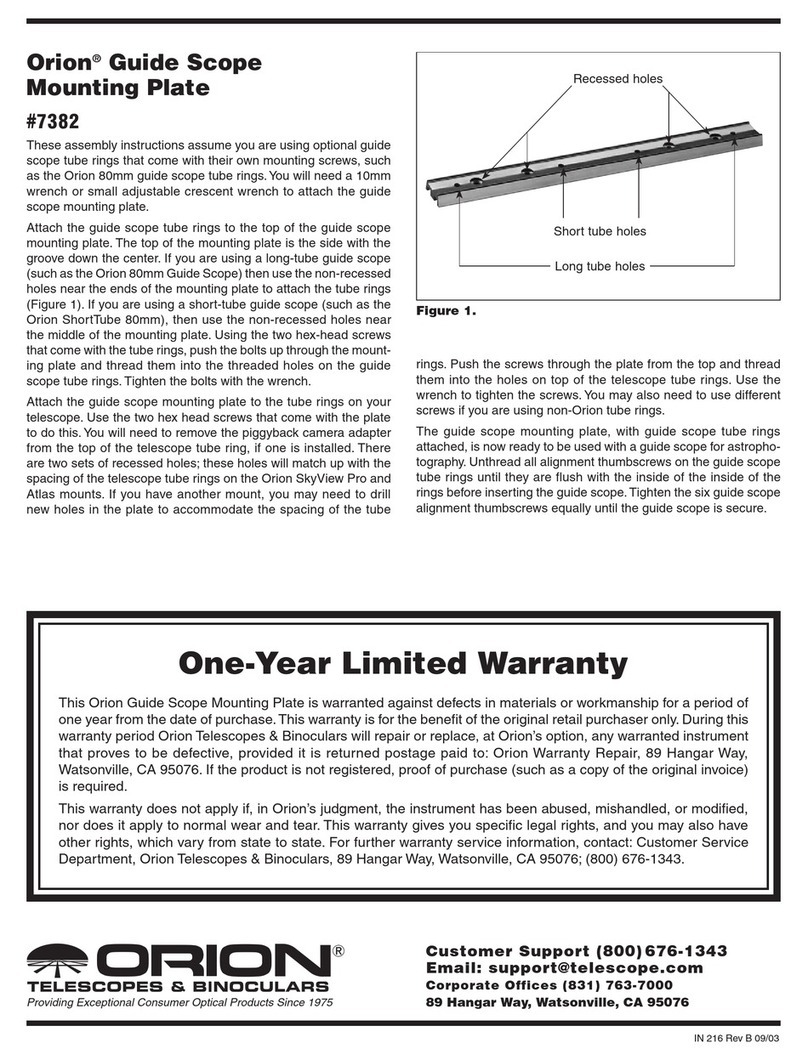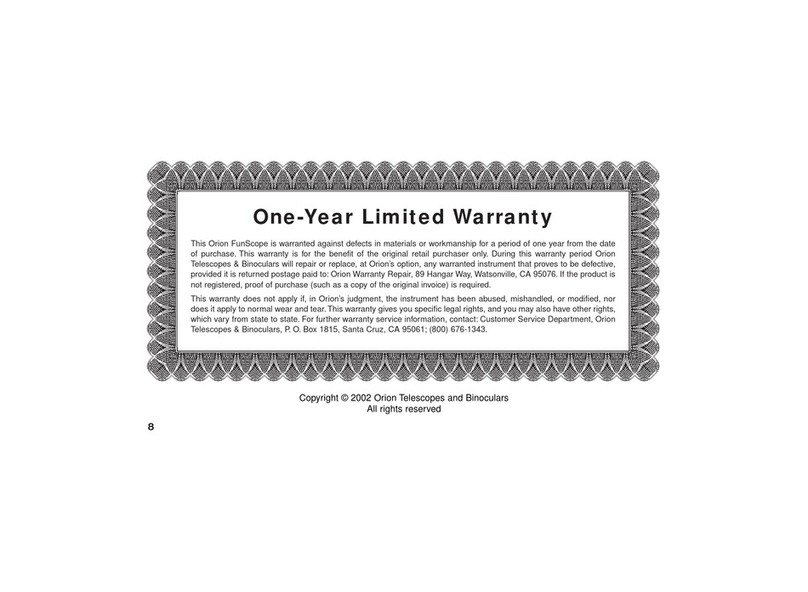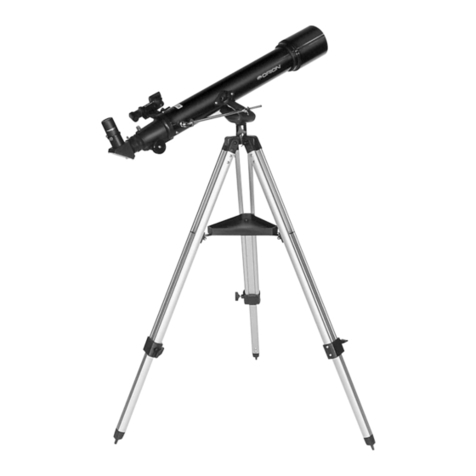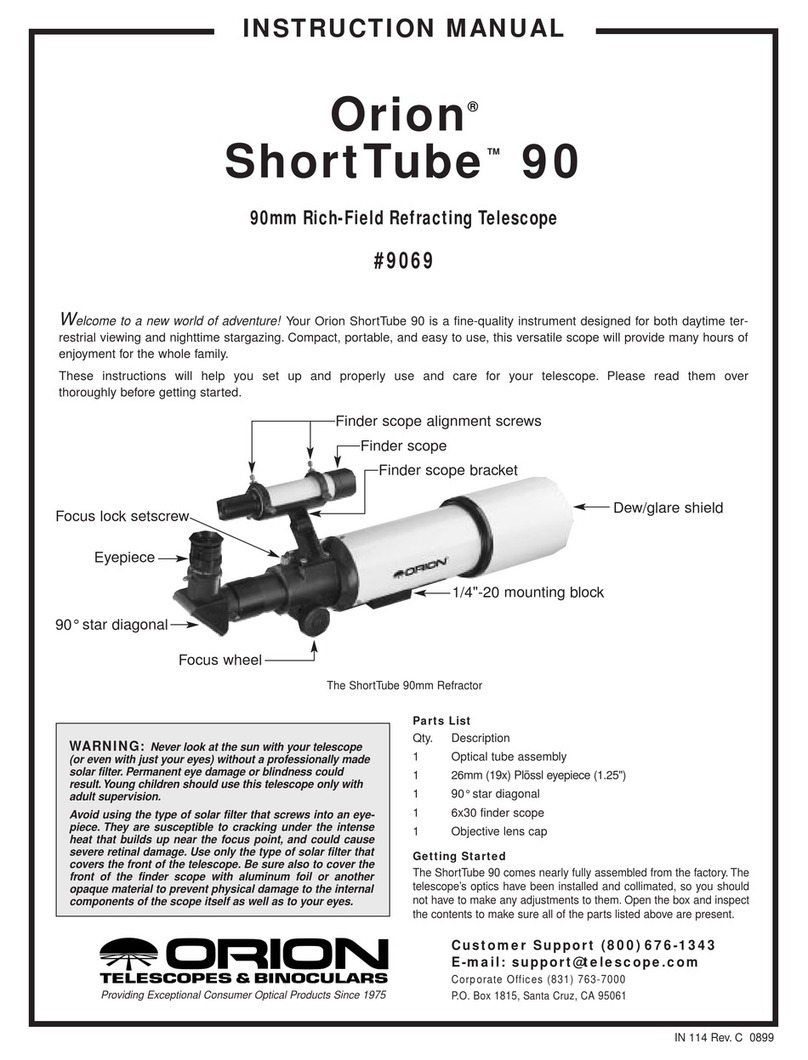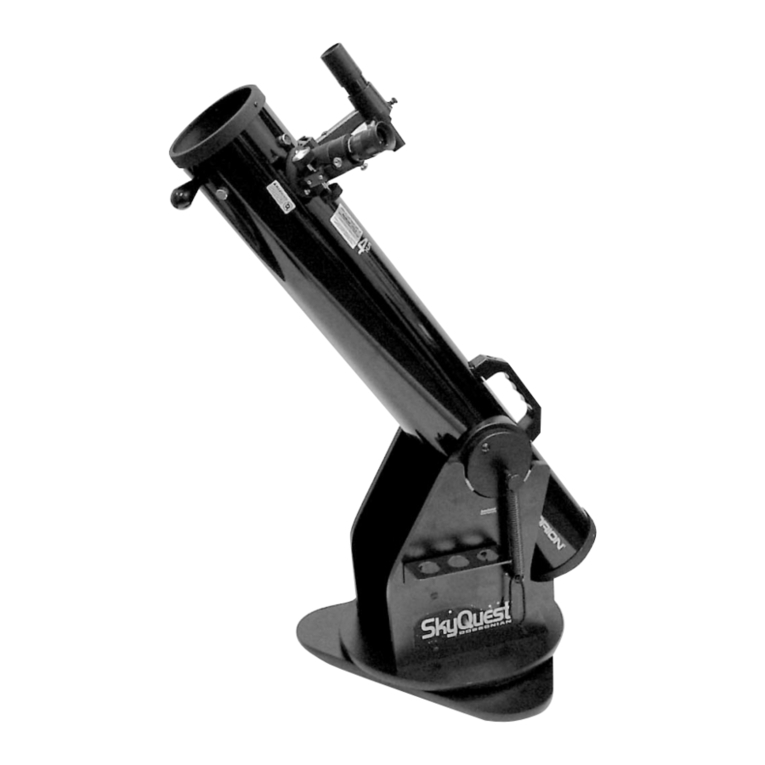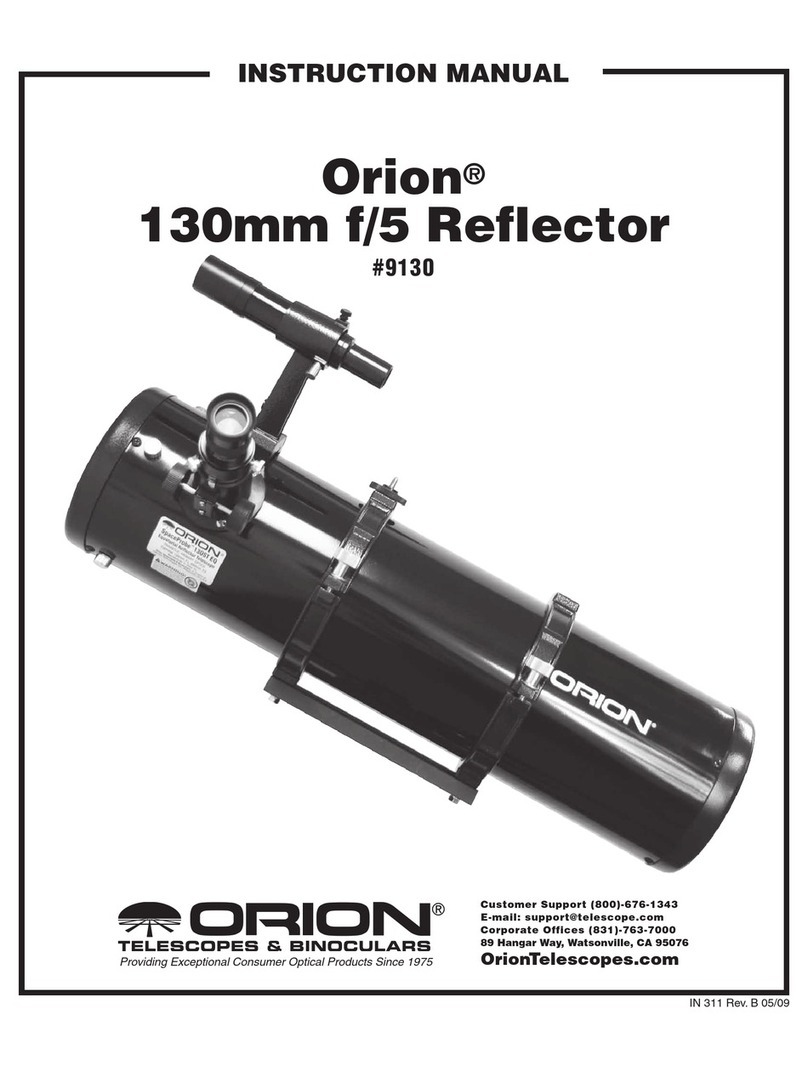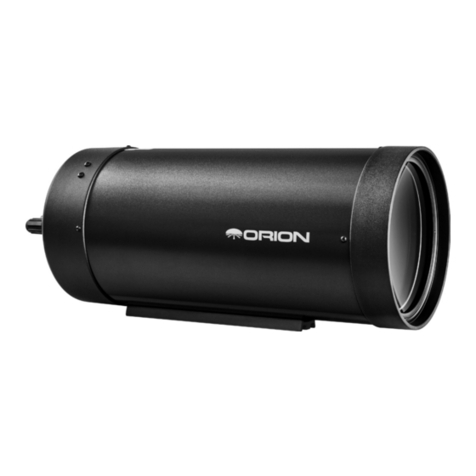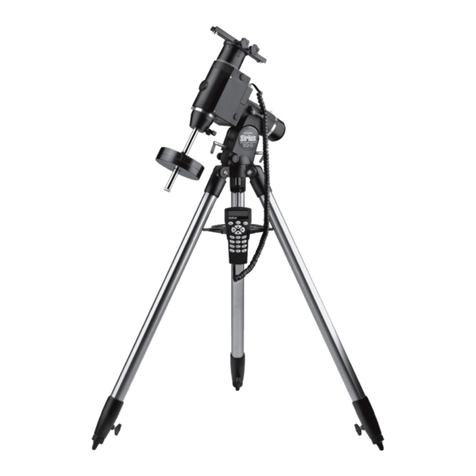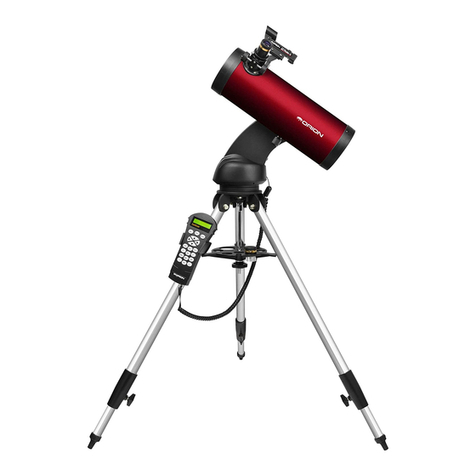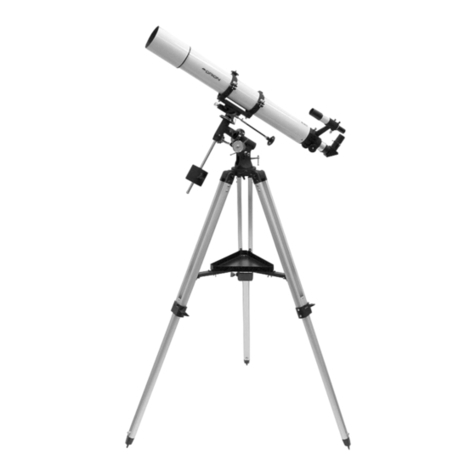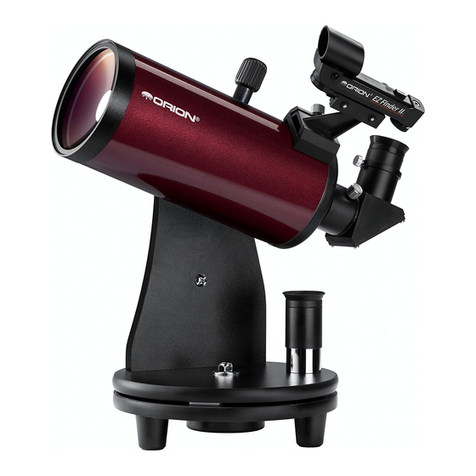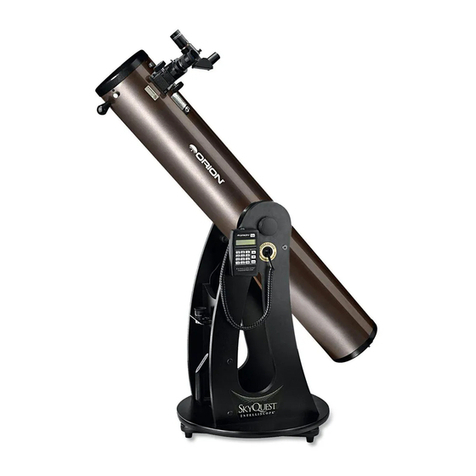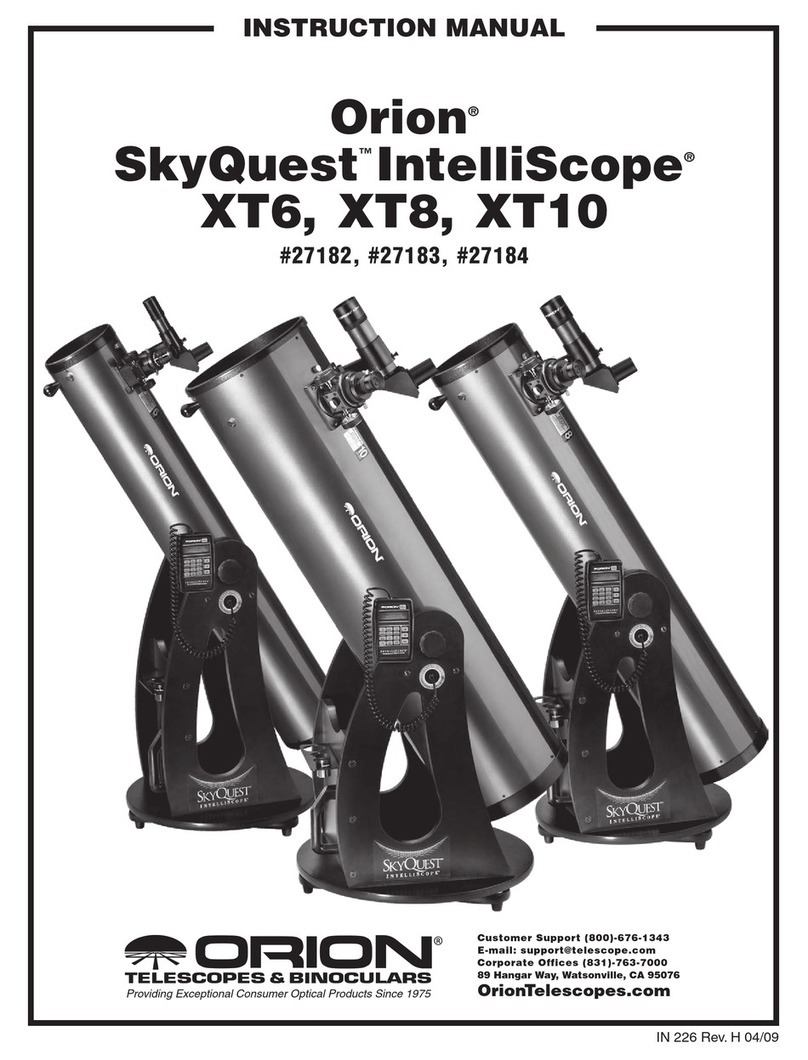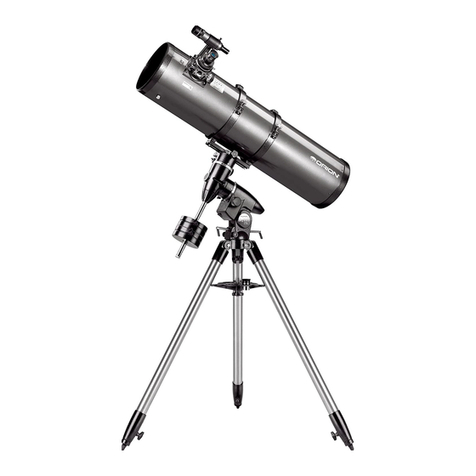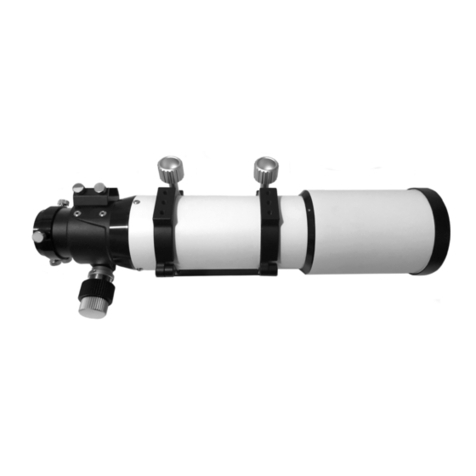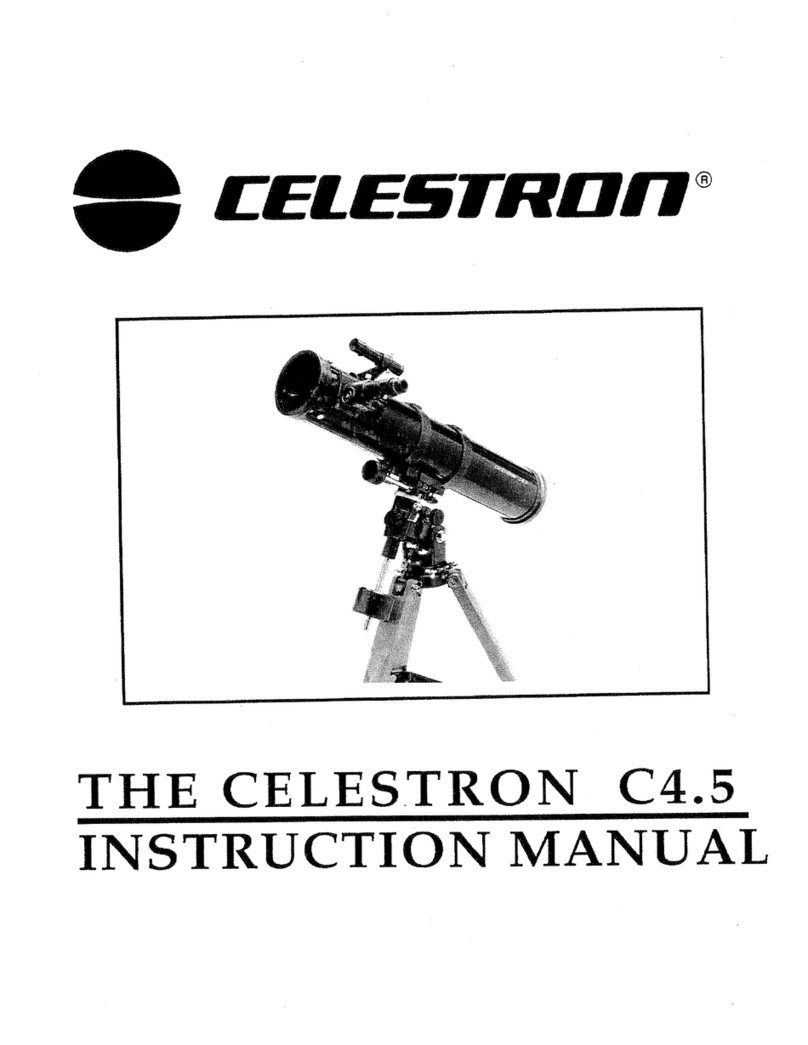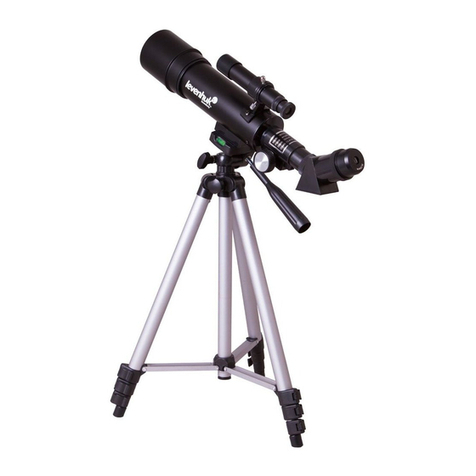
8
screws at the front of the secondary mirror holder (Figure 10).
This will adjust the tilt of the secondary, changing the relative
position of the secondary center ring when peering through
the collimation eyepiece.
NOTE: Only adjust the three screws around the perimeter
of the holder—do not adjust the center screw! (Figure
10). Adjusting the center screw can cause the secondary
mirror to fall off and will not be covered under warranty.
A 4mm hex key is required to perform collimation on the
secondary mirror. When adjusting one of these screws you
will need to make counter-adjustments to the other two.
Therefore, if you are loosening one screw you will need to
tighten the other two. At the end of the process you want all
three collimation screws to be reasonably tight so the second-
ary mirror won’t shift while the scope is in use.
Always start by loosening one screw. Adjust the screws
only very slightly—by no more than 1/10 turn at a time, and
one screw at a time before checking the view through the
Cheshire again to see how things changed. Only tiny adjust-
ments should be required to achieve collimation. This will
also aid in the prevention of accidently putting the telescope
grossly out of collimation. With each tiny tweak of a screw,
make a mental note of which way and how far the center dot
moved, as that will inform which screw to turn next and by
how much. Experiment with different combinations of loosen-
ing/tightening the three screws one by one until the collima-
tion eyepiece’s black dot is centered in the dark ring of the
secondary mirror.The correct alignment of the secondary mir-
ror is critical in determining if the optical axis requires align-
ment. Be sure you have properly aligned the secondary mirror
before proceeding to the next step.
The optical axis is denoted by a thin outline of light (white)
around the perimeter of the view through the collimating eye-
piece (Figure 9A). If this outline is not a perfect circle of uni-
form thickness, as in 9C, that’s an indication that the optical
: Three pairs of collimation screws on the rear cell
allow adjustment of the optical axis, if needed. (8" RC shown)
Chrome
Collimation
screw
Black lock
screw
The secondary mirror collimation adjustment screws. A
4mm hex key is required.
A de-focused view of a bright star through an
eyepiece. Proper collimation will show concentric, symmetrical
diffraction rings with a dark spot exactly in the center, as in the
image on the right. If the spot is off-center, the scope needs
collimation.
Out of collimation Collimated
Secondary
mirror
collimation
adjustment
screws
Do not
adjust center
screw!
axis (primary mirror) needs adjustment. This adjustment will
require 3mm and 2.5mm hex keys for the 6" and 8" RCs, and
4mm and 2.5mm hex keys for the 10" RC.
Note that there are three pairs of screws on the rear cell of the
optical tube where the focuser attaches (Figure 11). Each pair
consists of a small black screw and a larger chrome screw.
The small black screws are merely locking screws, which
you should loosen before adjusting the mirror’s tilt. The larg-
er chrome screws are spring-loaded collimation screws that
actually adjust the tilt of the primary mirror. Turn these collima-
tion screws only a fraction of a turn at a time. Turn one and
check the view through the Cheshire to see if it improved the
white optical axis ring. Keep tweaking the collimation screws,
each time checking the optical axis ring, until it is concentric
and uniform in width. Then tighten the three lock setscrews to
fix the mirror in that position.
After adjusting the optical axis, re-check the collimation of the
secondary mirror and make any necessary adjustments, then
recheck the optical axis collimation. Optical axis collimation
will not need to be performed very often, if ever.
